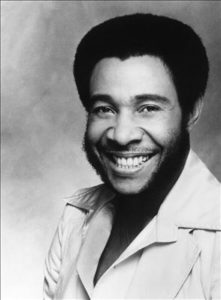 One of the biggest hits of my childhood was “Duke of Earl” by Gene Chandler. It was pretty much impossible for children of any age to not love the 1962 single with its addictive bass chant “Duke, Duke Duke, Duke of Earl … ” I’m hearing it in my head even as I write this, and now that you’re reading it, I’ll bet you are too. The proof that the record was, and is, undeniable was the #1 spot it reached on both the Pop and R&B charts.
One of the biggest hits of my childhood was “Duke of Earl” by Gene Chandler. It was pretty much impossible for children of any age to not love the 1962 single with its addictive bass chant “Duke, Duke Duke, Duke of Earl … ” I’m hearing it in my head even as I write this, and now that you’re reading it, I’ll bet you are too. The proof that the record was, and is, undeniable was the #1 spot it reached on both the Pop and R&B charts.
Gene Chandler (born Eugene Dixon) grew up on the South Side of Chicago. He began his music career in the early ’50s with a band called the Gaytones. Later in the decade he became a member of the Dukays. Chandler’s singing career was interrupted when he was drafted into the Army, but by 1960 he had returned to the Dukays, and was their lead singer when they signed with Nat Records. Their first single for the label was “The Girl is a Devil,” which was released in 1961. The record reached a respectable #64 on the Pop chart.
A subsequent Dukays session for Nat Records resulted in four more tracks, including “Nite Owl,” and “Duke of Earl.” When the record company fatefully decided to release “Nite Owl” as the group’s next single, producers ‘Bunky’ Sheppard and Carl Davis shopped “Duke of Earl” and landed a deal with Vee Jay Records to release it as a solo single for Chandler. The record sold a million copies in just over a month and topped the Billboard Hot 100 for three weeks. Chandler played the part to the hilt, donning a top hat, cape, and monocle, and billing himself as ‘The Duke.’
By 1963, Chandler had left Vee Jay, and signed with Constellation Records. His hits for Constellation included “Just Be True,” and “Nothing Can Stop Me,” both penned by Curtis Mayfield, and produced by Davis. When Constellation went belly-up on 1966, Chandler moved on to Chess Records, then to Brunswick Records. The two labels actually alternated Chandler releases for some period of time.
More hits followed, including “What Now,” “Rainbow,” “I Fooled You This Time,” “Think About It,” “A Man’s Temptation,” “Rainbow ’65” (record live at the Regal Theater in Chicago), and “Bless Our Love.” But Chandler grew weary of constant performing, and looked to get into record production. One of his biggest successes as a producer was Mel & Tim’s 1969 smash “Backfield in Motion.” The record was a Top 10 hit on the Billboard Hot 100.
Chandler’s success as a producer earned him the National Association of Television and Radio Announcers Producer of the Year award in 1970. It was an impressive achievement for Chandler, particularly in light of the fact that his competition for the award that year included Kenny Gamble & Leon Huff, and Norman Whitfield.

Chandler was not done as a singer however. He released “Groovy Situation” in 1970, and it became his second biggest single, after “Duke of Earl.” The song was written by Russell Lewis and Herman Davis, and had originally been recorded by Mel & Tim. Chandler’s version reached #12 on the Billboard Hot 100, went Top 10 on the R&B chart, and sold a million copies.
Chandler collaborated with Jerry Butler on the album Gene and Jerry: One on One later in 1970. He sang with Curtis Mayfield on the live album Curtis in Chicago in 1973, and with Arthur Louis on the Knocking on Heaven’s Door album, which also featured Eric Clapton, the following year. Chandler released four singles on Mayfield’s Curtom label, but none of them had any chart success.
Later in the decade Chandler found renewed success in the disco era. His hits from that period included “Get Down,” “When You’re #1,” and “Does She Have a Friend?” It was also during this time that Chandler was named Executive Vice President of Chi Sound Records.
Chandler continues to perform in the U.S. and Europe. His extraordinary career spanned the doo-wop, rhythm & blues, soul, and disco era. Chandler is a Grammy Hall of Fame inductee, and was given a Pioneer Award by the Rhythm & Blues Foundation. He was inducted into the Official Rhythm & Blues Music Hall of Fame in 2014.





Comments